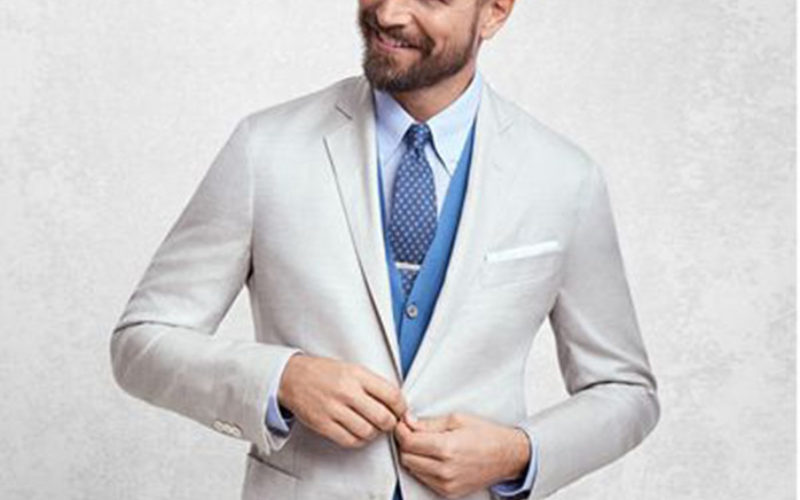Q. You write that older men who put on weight need to adjust their clothing, but what about thinner men? I have a bit of a belly, but otherwise I’m thinner than when I first married. Our son is over 6′ and under 175 lbs. What choices should we make to look our best?
A. Many men would like to have those problems. You may be the only one in town who believes you are perilously thin, or a head too tall, or some such suspected deviation. But as long as you believe it, it will affect how you present yourself. There are certainly a few subtle changes that can make big visual differences, including clothes to avoid.
- Tips to help you optically add pounds:
- Wear stylish “layers” (sweaters, vests, or a bulky jacket over a lighter shirt) and create the illusion of width. Body elements that are very thin can be camouflaged.
- Try for lighter-colored suits within the acceptable ranges of blue, gray, and tan; dark colors make you look thinner.
- Any item that directs the eye horizontally rather than vertically, such as a contrasting belt or horizontally- or diagonally-striped neckties
- Shirt collars with slightly shorter points and a medium-wide spread
- For sportswear, striped polos and rugby shirts, sweaters with horizontal stripes or patterns.
Suit features to look for:
- Jackets and blazers with slightly wider lapels
- Double-breasted jackets with peaked lapels, perhaps also with double back vents
- Jackets with softly padded shoulders, slightly shaped/tapered sides
- If you are very thin, avoid pin-striped suits.
Suit/jacket fabrics to select:
- Bulky, textured fabrics rather than smooth ones – flannels or nubby tweeds, for example
- Small glen plaids, mini-herringbones, tiny checks, and any other patterns that are appropriate for business
- When wearing a blazer or sport coat, make use of colors. Choose sharply contrasting jacket and pants, such as a dark navy jacket with light gray or tan pants.
Men who are unevenly proportioned can achieve somewhat more balance by emphasizing the smaller of the unequal parts. Shades help with this and the rule is: Dark colors minimize; light colors emphasize. A man with a broader chest and shoulders, slim hips and bottom can gain more balance and proportion by wearing a dark blazer with contrasting trousers in light gray, camel, or winter white. Conversely, a man with a less developed upper body and broad bottom might wear a camel blazer with charcoal gray or navy trousers.
An important afterword. You can use many illusory tricks to create the look you want. You cannot eliminate all of the negative, but you certainly can learn to emphasize the positive. Knowing these simple secrets lets you show the world your best features. Nevertheless, it is essential to remember that while you are right to select clothes that are comfortable, feel good, and make you look your best, first things come first in the business world. If a style is flattering to you, but is not the accepted look of professionalism, you should opt for what is appropriate – for what is serious and widely accepted. As an example, suppose you are short. The books you have read and the tailor in the store may tell you that cuffs on trousers are better left to tall men. But you know that all of the top men in your industry are currently wearing cuffs. Wear cuffs.
If you are a redhead and know that green is a flattering color for you on the golf course, don’t elect to be the one guy at the office who comes to work in a green suit. It may flatter your face and work well for you, say, in a necktie, but it would look ridiculous in a suit. Do what works best for you within the framework of a grown-up world.
Please send your men’s dress and grooming questions and comments to MALE CALL: Lois.Fenton@prodigy.com









